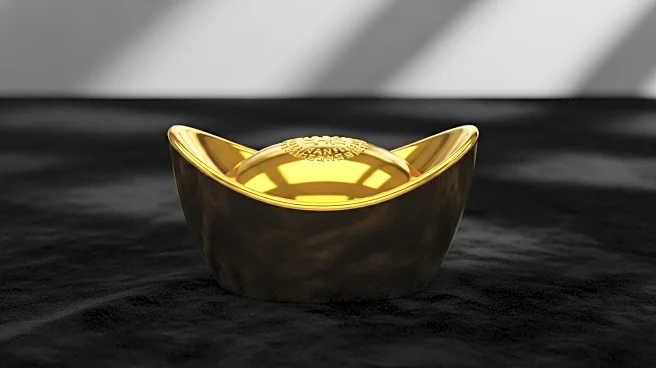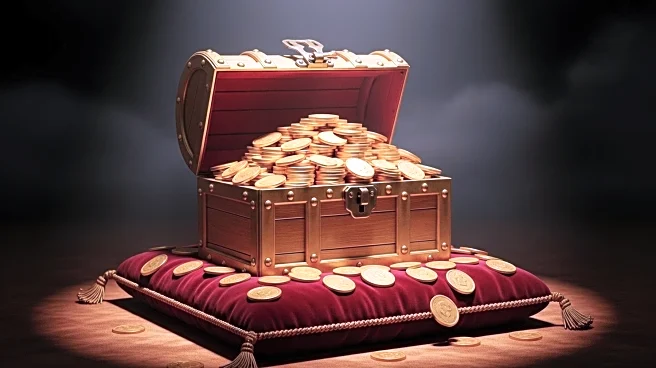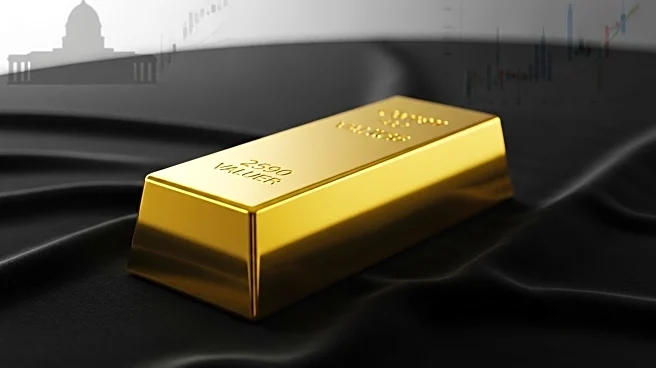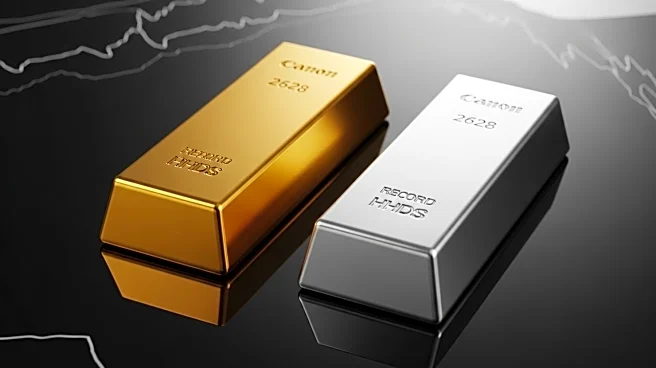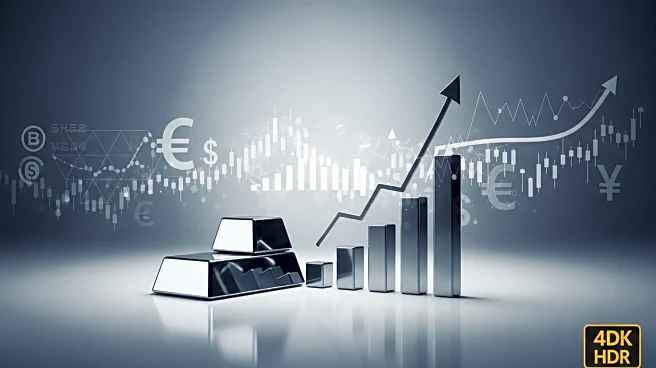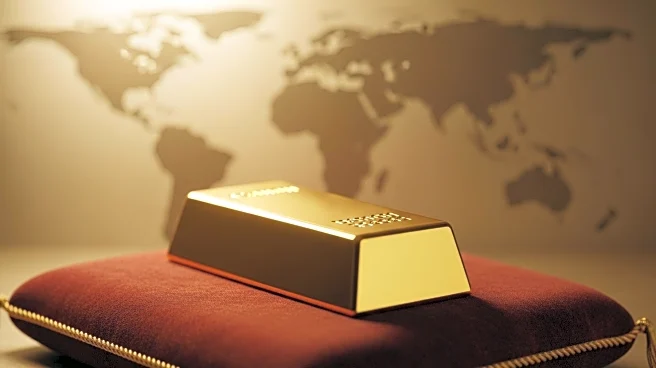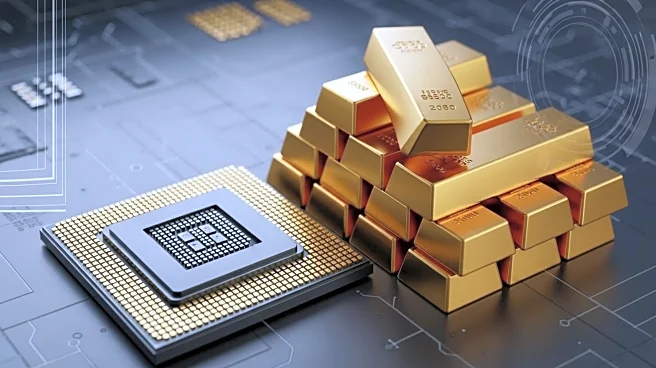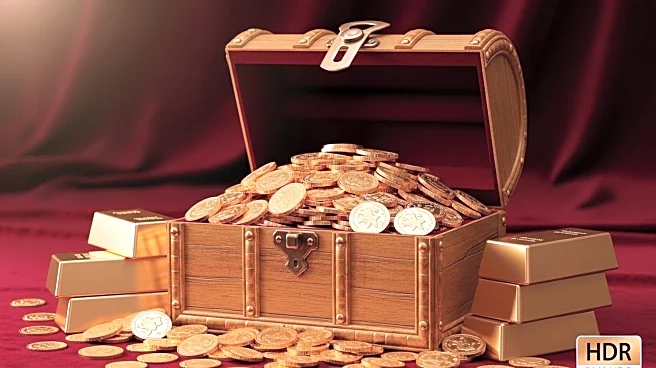What is the story about?
What's Happening?
Silver prices have reached a record high of $51 per troy ounce, marking the first time the metal has breached the $50 threshold since 1980. This surge is attributed to a combination of factors including strong industrial demand, investor interest in safe havens, and ongoing supply deficits. Silver has seen a 75% increase in value this year, driven by geopolitical instability and economic uncertainty, which have led traders to seek hard assets like silver and gold. The metal's dual role as both an industrial and safe-haven asset has contributed to its historic rally in 2025.
Why It's Important?
The rise in silver prices has significant implications for various sectors. Industrial applications, such as data centers, solar panels, and smartphones, rely heavily on silver, and the price increase could affect production costs and supply chains. Additionally, the surge reflects broader economic trends, including concerns over inflation, tariffs, and Federal Reserve policies. Investors are increasingly turning to silver as a hedge against a weakening dollar, which could influence market dynamics and investment strategies. The persistent supply deficit, due to stagnant mining output, suggests that prices may continue to rise, impacting both investors and industries reliant on silver.
What's Next?
As silver prices continue to climb, investors may increase their exposure through physical purchases or exchange-traded funds (ETFs). The iShares Silver Trust ETF, for example, has already seen a 68% increase this year. The ongoing supply deficit could further drive prices up, prompting more investment in silver. Market analysts will likely monitor geopolitical developments and economic indicators closely, as these factors could influence future price movements. Industries dependent on silver may need to adjust their strategies to mitigate the impact of rising costs.
Beyond the Headlines
The silver market's dynamics highlight broader economic and geopolitical shifts. The metal's role as both an industrial component and a safe-haven asset underscores the interconnectedness of global markets. As central banks diversify away from the dollar, precious metals like silver and gold become increasingly attractive. This trend may lead to long-term shifts in investment strategies and economic policies, as stakeholders adapt to changing market conditions.
AI Generated Content
Do you find this article useful?


